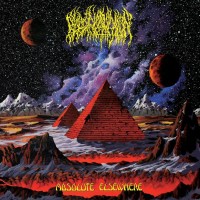Solefald - Biography
Logo
2005-
Biography
In the midst of a historically creative musical movement in the mid-1990s, many looked to Norway for the definitive, authoritative word on melodic black metal. Time and time again, history has shown that every new movement has two components: 1) conservatives willing to impose and defend their agenda; and 2) subversives waiting to overthrow the agenda imposed on them. Solefald's Jernlov demo surfaced in the autumn of 1995 and literally shattered the orthodoxies of the newly emergent black metal genre. While some thought Solefald pushed the boundaries too far (the band actually received a death threat), few could understand that actually pushing limits was the only way any creation can truly develop. This firebrand of subversiveness is one Solefald proudly carried into their future. While no trace exists of what "Solefald" actually means, vocalist/guitarist/bassist Cornelius Jakhelln and vocalist/keyboardist/drummer Lazare Nedland (also of Borknagar fame) have made a strong case for the definition to be one of adventurous musical hedonism drenched in fluidity.
One thing is certain: any attempt to categorize Solefald's music automatically betrays it. Along with Japan's Sigh, Finland's .and Oceans, and Norway's Dødheimsgard & Arcturus, the uncompromising musicians of Solefald proudly immerse listeners in a world that's often ignored - and in come circles, even shunned. Through their cumulatively unpredictable and intellectual compositions of 1997's The Linear Scaffold (inspired by the art of Odd Nerdrum, the poetry of Lord Byron, the music of Beethoven, Norwegian pantheism, and existentialist philosophy); 1999's Neonism (summarized as "a left-field mind-fuck"); and 2001's concept album of "red music with black edges," Pills Against The Ageless Ills, Solefald accelerated the evolution of black metal by insisting that lyrics develop alongside the music. Their satire, irony, and modernist prose promoted a now characteristic musical depth. With Pills Against The Ageless Ills, Metal Maniacs correctly claimed that Solefald "have handily solidified themselves a unique position as both a metal band who's ambitious and, more importantly, one who actually succeeds in their ambition."
With a reputation of creating insanely defiant, ambitious, and high-concept yet entertaining metal, Solefald return in Anno MMIII to make the known look unknown and reveal ten more principles of the science that powers their extreme music. At first listen, In Harmonia Universali immediately brings to mind the progressive airs of Yes' vintage '70s art rock, but Solefald soon lead their listeners astray into customarily unfamiliar territory. Sung in four languages (Norwegian, German, French, and English) and graced with a male choir, a saxophone, Spanish guitar, and the keyboard exotica of a Steinway grand piano & a Hammond B-3 organ, the layered nature of In Harmonia Universali's music reveals something new with each listen. In accordance with Alternative Press' opinion that the creative free space of Solefald's music is "the kind of complete sensory experience only the best metal can provide," the band proves they are never predictable, and are better off for it.
Recorded at Oslo's Top Room Studio with producer Borge Finstad (Mayhem, Borknagar, Vintersorg), featuring the artwork of Czech painter Jan Kristofori, and digital design & photography by Asgeir Mickelson (Borknagar, Spiral Architect), In Harmonia Universali is another bold declaration of autonomy, exercising Solefald's very natural affinity for rebellion that laughs in the face of mandated rigidity. With lyrics and music that stand alone but merge for the sake of creating a singular experience, this is an open invitation into the minds of active usurpers
This, ladies and gentlemen, is Revolution.
One thing is certain: any attempt to categorize Solefald's music automatically betrays it. Along with Japan's Sigh, Finland's .and Oceans, and Norway's Dødheimsgard & Arcturus, the uncompromising musicians of Solefald proudly immerse listeners in a world that's often ignored - and in come circles, even shunned. Through their cumulatively unpredictable and intellectual compositions of 1997's The Linear Scaffold (inspired by the art of Odd Nerdrum, the poetry of Lord Byron, the music of Beethoven, Norwegian pantheism, and existentialist philosophy); 1999's Neonism (summarized as "a left-field mind-fuck"); and 2001's concept album of "red music with black edges," Pills Against The Ageless Ills, Solefald accelerated the evolution of black metal by insisting that lyrics develop alongside the music. Their satire, irony, and modernist prose promoted a now characteristic musical depth. With Pills Against The Ageless Ills, Metal Maniacs correctly claimed that Solefald "have handily solidified themselves a unique position as both a metal band who's ambitious and, more importantly, one who actually succeeds in their ambition."
With a reputation of creating insanely defiant, ambitious, and high-concept yet entertaining metal, Solefald return in Anno MMIII to make the known look unknown and reveal ten more principles of the science that powers their extreme music. At first listen, In Harmonia Universali immediately brings to mind the progressive airs of Yes' vintage '70s art rock, but Solefald soon lead their listeners astray into customarily unfamiliar territory. Sung in four languages (Norwegian, German, French, and English) and graced with a male choir, a saxophone, Spanish guitar, and the keyboard exotica of a Steinway grand piano & a Hammond B-3 organ, the layered nature of In Harmonia Universali's music reveals something new with each listen. In accordance with Alternative Press' opinion that the creative free space of Solefald's music is "the kind of complete sensory experience only the best metal can provide," the band proves they are never predictable, and are better off for it.
Recorded at Oslo's Top Room Studio with producer Borge Finstad (Mayhem, Borknagar, Vintersorg), featuring the artwork of Czech painter Jan Kristofori, and digital design & photography by Asgeir Mickelson (Borknagar, Spiral Architect), In Harmonia Universali is another bold declaration of autonomy, exercising Solefald's very natural affinity for rebellion that laughs in the face of mandated rigidity. With lyrics and music that stand alone but merge for the sake of creating a singular experience, this is an open invitation into the minds of active usurpers
This, ladies and gentlemen, is Revolution.




